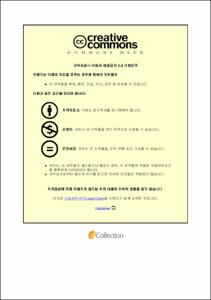Aquaculture biosecurity
- Alternative Title
- 양식장 생물안전(Biosecurity): 우간다의 틸라피아 (Oreochromis niloticus) 상업 양식 모델 제안
- Abstract
- Uganda’s aquaculture industry has been growing at a rate of over 200% for the last decade with eminent intensification, and commercialization of Nile tilapia (Oreochromis niloticus) culture enterprises. Cases of infectious disease caused by bacteria, parasites, unexplainable mortalities in both hatcheries and grow-out farms have been established. A survey of some aquaculture facilities, and literature review on aquaculture management and related policies and regulatory framework in Uganda revealed significant lapses in biosecurity system at both farm and national level. Notably, gaps were identified in awareness of farmers on fish health management, husbandry practices, aquaculture inputs and products quality assurance, technical capacity, enforcement of aquaculture regulations and research. Up to now, Uganda lacks a national aquaculture biosecurity policy; hitherto the National fisheries policy has limited focus on fish health management among others. Less knowledge is available on pathogens and diseases of cultured fish species in Uganda; moreover, fish diseases diagnostic facilities are still basic. Control and prevention strategies; regulation and enforcement of statutory instruments are hardly in practice. Hence, there is a dire need to improve aquaculture biosecurity systems in Uganda; focusing on promotion of simple better management practices at farm level, and improvement of national and supranational management framework. This study provides benchmarks for improvement of biosecurity system and regulatory framework related to aquaculture at national and farm level; to facilitate effective control and prevention of fish disease and other undesirables from fish culture environments. Consequently, that not only protects the nascent aquaculture and vital fisheries sectors in Uganda but also safeguards aquaculture enterprise and trade development in the entire East African Community region.
- Issued Date
- 2016
- Awarded Date
- 2016. 2
- Type
- Dissertation
- Publisher
- 부경대학교 글로벌수산대학원
- Affiliation
- 부경대학교 글로벌수산대학원
- Department
- 글로벌수산대학원 국제수산과학협동과정
- Advisor
- 김도형
- Table Of Contents
- Table of Contents i
List of Figures vii
List of Tables viii
Abstract ix
Chapter 1. Introduction 1
1.1 Introduction 1
1.1.1 Background 4
1.1.2 Aquaculture importance in Uganda’s socio-economic development 5
1.1.3 Aquaculture development and biosecurity management in Uganda 6
1.2 Statement of the problem 8
1.3 Objectives of the study 11
1.3.1 Main objective 11
1.3.2 Specific objective 11
1.4 Conceptual frame work 12
Chapter 2. Research Methods 14
2.1 Scope of the study 14
2.2 Study approach 14
2.3 Data collection 15
2.4Data processing and analysis 17
Chapter 3. Results and Discussion 18
3.1 Nile tilapia culture and biosecurity management in Uganda 18
3.1.1 Nile tilapia culture production and development 18
3.1.1.1Nile tilapia culture potential and distribution 18
3.1.1.2 Aquaculture development trajectory 20
3.1.1.3 Culture facilities and infrastructure 23
3.1.1.4 Culture inputs(seed, feed, fertilizers, chemical &drugs) 23
3.1.1.5 Water resources and waste water management 29
3.1.1.6 Culture systems and husbandry practices 32
3.1.1.7 Farmer organization and education 35
3.1.1.8 Extension, advisory and information services 38
3.1.1.9 Aquaculture products marketing 39
3.1.2. Fish health management and food fish safety 40
3.1.2.1 Fish health management 40
3.1.2.2 Diseases surveillance 44
3.1.2.3 Aquaculture food fish safety 45
3.1.3 Shrouded aquaculture hazards in Uganda 47
3.1.3.1 Nature of integrated farming systems 47
3.1.3.2Aquaculture and capture fisheries interactions 48
3.1.4 Aquaculture governance and associated biosecurity issues in Uganda 50
3.1.4.1 Policy frame work 50
3.1.4.2 National Regulation and standards 51
3.1.4.3 Compliance with international standards and guidelines 53
3.1.4.4 Institutional landscape 55
3.1.5 Summary of identified biosecurity issues in Uganda’s aquaculture 58
3.2 Towards improving Aquaculture biosecurity practices in Uganda 59
3.2.1 Farm biosecurity practices 61
3.2.1.1 Farm design and siting 62
3.2.1.2 Codes of good practices (COP) and farmer institutional development 64
3.2.1.3 Farm level biosecurity plans and standard operating procedures (SOPs) 65
3.2.1.4 Education, training and information sharing 67
3.2.1.5 Personnel and farm traffic management 68
3.2.1.6 Inputs utilization, control and management 70
3.2.1.7 Pond maintenance and effluent management 75
3.2.1.8 Integrated aquaculture 78
3.2.1.9 Integration of HACCP and food safety education 79
3.2.1.10 Aquaculture-capture fisheries coupling 81
3.2.1.11 Traceability and record keeping 83
3.2.2 National aquaculture biosecurity strategy 88
3.2.2.1 Aquaculture biosecurity policy 88
3.2.2.2 Farm registration 89
3.2.2.3 Multi-sectoral linkages and collaborations 90
3.2.2.4 Institutional strengthening and manpower development 91
3.2.2.5 Inspection and regulatory services 92
3.2.2.6 Monitoring, Pro-active diseases surveillance and reporting 93
3.2.2.7 Need for aquaculture biosecurity research 94
3.2.2.8 Supranational aquatic biosecurity strategy and management framework 96
3.2.2.9 Adherence to International Standards, Agreements and Codes 97
3.2.2.9.1 Code of Conduct for responsible fisheries (FAO, 1995) 98
3.2.2.9.2 Office international des Epizooties (OIE) standards (Aquatic Code and Diagnostic manual, 2014) 99
3.2.2.9.3 Codex Alimentarius Commission/CAC (FAO/WHO, 1999) 100
3.2.2.9.4 Sanitary and Phyto-sanitary Measures Agreement/SPS (WTO, 1995) 100
3.3 Limitations of the Study 105
Chapter 4. Conclusion and Recommendation 106
4.1 Conclusion 106
4.2 Recommendations 108
4.2.1 Short term recommendations 108
4.2.2 Medium and Long term recommendations 109
References 110
Acknowledgements 122
Appendices 123
- Degree
- Master
- Appears in Collections:
- 글로벌수산대학원 > 국제수산과학협동과정
- Files in This Item:
-
-
Download
 Aquaculture biosecurity.pdf
기타 데이터 / 1.67 MB / Adobe PDF
Aquaculture biosecurity.pdf
기타 데이터 / 1.67 MB / Adobe PDF
-
Items in Repository are protected by copyright, with all rights reserved, unless otherwise indicated.